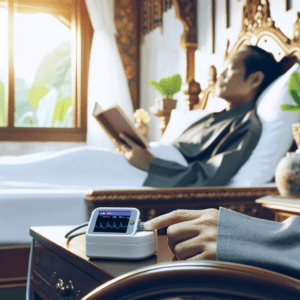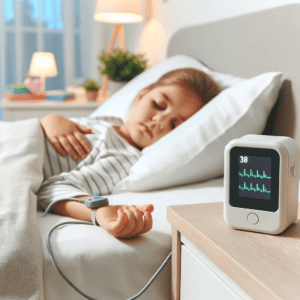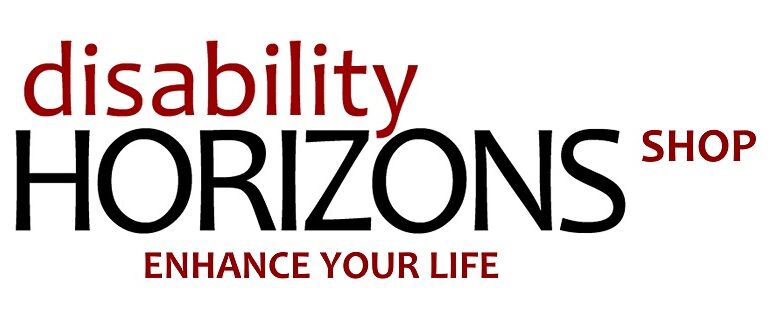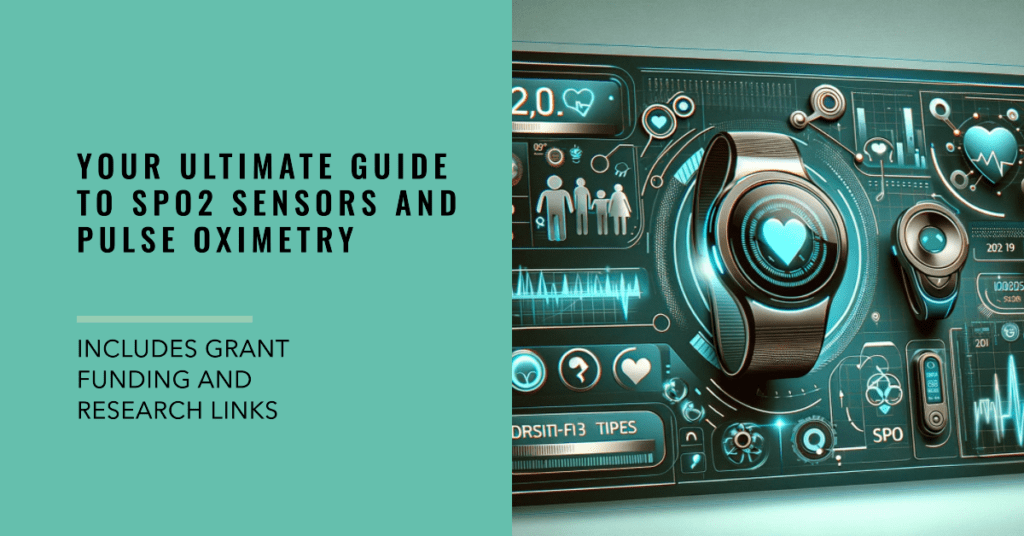Understanding SpO2 Sensors and Pulse Oximetry
Perhaps you’ve been handed an oxygen monitor for the first time, or you’re caring for a child whose health requires constant attention. In this guide, we will demystify the world of SpO2 sensors, giving you the knowledge to confidently monitor and manage oxygen levels.
About the Author: Duncan Edwards
My journey with SpO2 sensors began with my degree in genetics, a foundation that gave me a deep understanding of the biochemistry and biology of human life.
For 18 years, I’ve been closely monitoring my child, who has Dravet syndrome, a form of epilepsy, using a pulse oximeter.
This device has been an essential tool, both at home and during numerous hospital stays. My experience extends beyond just reading numbers; I’ve tackled challenges like correct sensor positioning and interpreting false readings. These sensors have been a source of reassurance and crucial information, alerting me to seizures in the night and guiding me on when to perform respiratory exercises or make the critical decision to call an ambulance. My hands-on experience has saved countless hours waiting for medical confirmation, making me well-versed in the practicalities and nuances of SpO2 sensor usage.
Looking for reliable and affordable SpO2 sensors? I have obtained a supply of these for our shop because of extremely high prices elsewhere. Visit Disability Horizons Shop to see our low-cost, high-quality SpO2 9-pin sensors.
Key Takeaways:
| Aspect | Detail |
|---|---|
| SpO2 Sensor Function | Measures blood oxygen saturation non-invasively |
| Oxygen Saturation | Percentage of oxygen-saturated hemoglobin in the blood |
| Medical Uses | Useful in monitoring health conditions like sleep apnea, epilepsy, and COVID-19 |
| Sensor Types | Includes fingertip, handheld, tabletop, and wrist pulse oximeters |
| Advantages | Non-invasive, real-time monitoring |
| Limitations | Can be affected by skin pigmentation, movement, temperature |
| Choosing a Sensor | Consider patient age, weight, and specific health needs |
| Evidence for their Use | Research paper links |
| Accuracy | Essential for effective health monitoring, but varies based on conditions and sensor type |
| Grants to Help Fund A Pulse Oximeter | UK charities that consider funding applications for Pulse Oximeters |
| Tips from A Parent | The real experience from 18 years of daily monitoring! |
| FAQs | All the questions you have are answered |
Spo2 Sensors and Pulse Oximetry
Pulse oximeters are handy tools that check your heart rate and how much oxygen is in your blood. They’re really helpful for people with conditions like epilepsy during sleep, sleep apnea and respiratory problems. For example, with epilepsy, it can help you tell if a seizure might be happening due to changes in these readings.
The pulse oximeter, which uses a probe which may stick onto a finger or toe, lets you or caregivers know if the heart rate goes up or oxygen dips down, which can mean it’s time for urgent help.
They work best when the person is still, so sometimes they’re put on while the person is sleeping. It’s important to remember that these gadgets help watch over health, but they don’t take the place of medical advice or having someone keep an eye on you whilst sleeping.
Pulse oximeters are there to assist, not to make diagnoses or be the only way to check on health.
What Is a SpO2 Sensor, and How Does It Work?
SpO2 sensors are devices used to measure the oxygen saturation level in a person’s blood. This measurement is crucial for assessing a person’s respiratory function.
That is, how well they are breathing and how much oxygen is getting into their bloodstream and to their body parts.
What is oxygen saturation?
Oxygen saturation refers to the percentage of oxygen-saturated haemoglobin relative to total haemoglobin in the blood.
Oxygen saturation is a percentage score that tells us how much oxygen is in a person’s blood.
Technically, How Does It Measure it?
SpO2 sensors work by passing light through a body part, usually a fingertip or earlobe, and measuring the amount of light absorbed by oxygenated and deoxygenated blood.
You put them on a part of your body like your fingertip or earlobe. Then, they shine a light through your skin. Your blood, with oxygen and without oxygen, absorbs this light differently. The sensor measures how much light gets through and how much is absorbed. This shows how much oxygen is in your blood. It’s a quick and easy way to make sure your body has enough oxygen to stay healthy.
The Medical Uses of SpO2 Sensors
SpO2 sensors are used in monitoring various health conditions, including epilepsy, respiratory conditions, sleep apnea, and COVID-19.
- Epilepsy: SpO2 sensors help doctors see if a person with epilepsy is getting enough oxygen during a seizure.
- Respiratory Conditions: For people with lung problems, these sensors check if their lungs are sending enough oxygen into their blood.
- Sleep Apnea: During sleep, SpO2 sensors monitor if someone’s oxygen levels drop, a common issue in sleep apnea.
- COVID-19: For COVID-19 patients, these sensors are really important to make sure their lungs are working well and they’re getting enough oxygen
Advantages of SPO2 Sensors

These sensors offer non-invasive, real-time monitoring of oxygen levels, crucial for managing many health conditions.
They check oxygen levels in your body without needing to take blood samples or hurt or disturb the person being monitored.
They do it really fast, continuously, in real-time, which means you or your carers can see what’s happening right away. It helps make sure you know you have enough oxygen, which is really important to be healthy.
Limitations and Problems with Monitoring
While highly beneficial, SpO2 sensors can have limitations in accuracy due to factors like poor circulation, skin pigmentation, nail polish and external interferences.
SpO2 sensors are super helpful, but sometimes they don’t get things exactly right. This happens if your blood isn’t flowing well, like if you’re really cold or if your fingers are numb.
The colour of your skin can also make a difference, and sometimes things around you, like direct sunlight, bright lights or moving too much, can make for false readings. Families have reported that very active children or those with challenging behaviour, do not tolerate being attached via a wire to a machine. This can also occur with older people with dementia and other cognitive problems.
So, while these sensors are great at giving us a quick idea about oxygen levels, It’s important to look at the person as well as the sensor reading to make a judgement about what is happening.
Table of Factors that can affect the Accuracy of SpO2 Sensors whilst Monitoring
| Factor | Effect on SpO2 Reading |
|---|---|
| Sunlight | Direct sunlight can interfere with the sensor’s light, causing inaccurate readings. |
| Fluorescent Lights | Similar to sunlight, fluorescent lights can disrupt the sensor’s function and affect accuracy. |
| Numbness | Poor blood circulation in numb areas can lead to lower oxygen readings. |
| Nail Polish | Certain colours of nail polish can absorb the light from the sensor, affecting its accuracy. |
| Temperature | Extremely cold temperatures can reduce blood flow, impacting readings. |
| Skin Pigmentation | Heavier skin pigmentation can sometimes affect light absorption, leading to varied readings. |
| Positioning of Probe | Incorrect positioning can cause the sensor to record less accurate data. |
| Age of Probe – Disposables | Older or disposable probes may become less accurate over time or with repeated use. |
| Movement | Excessive movement can disrupt the sensor’s ability to get a stable reading. |
| Non-Compliance | Some Children and Adults refuse to wear them or take them off! |
Types of Oximeters and Their Uses
- Fingertip Clip-On Type Oximeters: Portable and easy to use, ideal for home monitoring but not comfortable for continuous monitoring. Often used in GP surgeries and clinics for instant reading
- Handheld Oximeters: More versatile, used in clinics and for home health care. Can be used by ambulances or carried by caregivers for travel and outings.
- Tabletop Oximeters: Stationary devices, often found in medical facilities, hospital wards etc. Used at home by people needing nighttime monitoring for sleep apnea or epilepsy, or continual monitoring of chronic respiratory problems.
- Wrist Pulse Oximeter: Smart watches and Fitbit style bands. Designed for continuous monitoring, especially during sleep. Usually for information and fitness rather than illness.
Types of SpO2 Probe Sensors
Choosing the right SpO2 sensor depends on what it’s for, the person using it, and where it’s used, like in a hospital or at home. Picking the right one is important for accurate results and patient comfort.
| Type | Suitable For | Placement | Use Case | Monitoring Type |
|---|---|---|---|---|
| Fingertip disposable wrap type SpO2 Sensors | Adult, pediatric, infant, neonatal | Fingers, toes, thumbs, hands, feet | Versatile, for various patient groups. Good for comfort over longer periods. Soft on the skin. | Both continuous and spot-check |
| Reflective SpO2 Sensors | All age groups | Forehead, chest, wrist, foot | Mostly used for smartwatches/Fitbit etc as not reliable for clinical use | Mostly continuous |
| Finger Clip SpO2 Sensors | Adults | Fingers | Clip over finger type, and measure arterial blood oxygen and pulse rate. For fast spot checks in GP surgeries, clinics, at home, etc | Spot check – not comfortable for longer periods |
| Neonatal/Infant/Pediatric SpO2 Sensors | Neonatal, infants, children | Tailored to small sizes | Adjusted for age, weight, application site. used in children’s hospital wards and CICU. | Both continuous and spot check |
How to Attach SpO2 Sensor Probes
Ensuring the Accurate Use of Pulse Oximetry Sensors
Guide to Attaching an SpO2 Sensor
Reusable Sensors (Spot Check/Short-Term Use)
-
- Place index finger over sensor window, fingertip against finger stop.
- If the index finger can’t be used, use a smaller finger.
- Ensure the cable is positioned along the top of the hand.
- Re-site every four hours; not for continuous monitoring.
Ear sensors
-
-
- Use clip attachment for ear sensor.
- Engage sensor pads in the clip, ensuring optical components are opposite each other.
- Apply to ear lobe for adults.
- Check for optimal light transfer.
-
Single Patient Use Sensors
-
- Wrap sensor around the index finger.
- Ensure optical components are opposite each other.
- Anchor cable with medical tape.
- Use adhesive dots to extend sensor life.
Sensors for neonates (new-borns)
For information only as this should be done after training:
-
-
- Apply on the neonate’s foot or palm.
- Position sensor with a dashed line on the lateral edge.
- Anchor cable with medical tape.
-
Table of Attachment Sites
| Attachment Site | Description | Important Notes |
|---|---|---|
| Finger | The standard method with a probe on fingertip | Keep free of nail polish/artificial nails, avoid bright light |
| Ear | Used when finger placement is not suitable | A sensor placed on the earlobe |
| Forehead | Reflective sensors with an emitter and receiver on the same side | Alternative for non-optimal finger/ear use |
| Nose, Foot, Toes | Chosen based on the patient’s condition | Attach to nose, foot, or toes |
| Neonatal | Placed on palm or foot in neonates | Adjusted for the small size of neonates |
| Other Sites | Reflective sensors for non-slender areas | Can be used on the chest, wrist or similar areas |
This is a brief informational guide. Follow specific manufacturer instructions.
Things to remember when attaching Sensor probes
- Check sensor site regularly for any signs of skin damage, some probes can heat up and cause minor burning, so it is recommended to move them 4 hourly.
- Use the right size sensor for children and adults
- Incorrect sensor placement can cause harm, stick to the recommended skin areas!
- Make sure the sensor is not wrapped too tightly so that you don’t restrict blood flow.
- Manufacturers advise not using additional tape on sensors if possible
- Avoid stretching the sensor tape whilst putting it on.
Adapter Cables for SpO2 Sensors
When setting up pulse oximetry systems, ensuring compatibility between different devices is crucial.
If you have an 11 pin system, sometimes the probes can be hard to find and expensive, whereas 9 pin probes are more widely available. In this case you can buy an adapter cable.
Adapter cables play a significant role in connecting SpO2 sensors to monitoring equipment, especially when using devices from different manufacturers. One essential adapter is the
GE 11 Pin SpO2 Adapter Cable to Nellcor 9 Pin:
- Compatibility: This adapter cable is designed to connect GE 11 Pin monitors to Nellcor (or compatible) 9 Pin sensors, ensuring seamless data transmission and accurate readings.
- High Quality: Made with durable materials to withstand frequent use in clinical settings.
- Ease of Use: Simple to connect and disconnect, allowing for quick setup and transition between different monitoring systems.
Using the right adapter cables, like the GE 11 Pin to Nellcor 9 Pin, can enhance the reliability and versatility of your pulse oximetry setup, ensuring accurate oxygen saturation monitoring regardless of the equipment brands in use.
Using Sp02 Monitoring for Children with Epilepsy

Pulse oximeters are devices used to monitor heart rate and oxygen levels, especially useful during seizures, which typically cause an increase in heart rate and a drop in oxygen levels. These devices are particularly beneficial for individuals with Dravet Syndrome.
The oximeter, usually attached to a toe via a sticky probe, alerts caregivers to changes in heart rate and oxygen levels, signalling a potential seizure and the need for emergency treatment.
However, using the device can be challenging with active or uncooperative children, often leading families to attach the probe when the individual is asleep. While these devices are used both day and night to monitor vital signs, it’s crucial to understand they are only assistive tools and should not replace clinical observation.
Grants to Help to Get a Pulse Oximeter at Home
These monitors are not commonly available on the NHS for home use. If you or someone you know needs a pulse oximeter at home, several charities and organisations offer help to get one.
- Lifebox works with Smile Train to give pulse oximeters to health workers in places that don’t have many resources, making surgeries safer. They’ve already given out over 33,400 pulse oximeters and plan to distribute 11,000 more. Find out more at their website: https://www.lifebox.org/our-work/pulse-oximetry/lifebox-pulse-oximeter/
- Children’s Dream Foundation (CDF) helps emergency workers get the tools they need, like pulse oximeters, to check people’s heart rates and oxygen levels quickly. Learn about their grants at: https://thecdf.org/grant/pulse-oximeters/
- Dravet Syndrome UK’s Seizure Monitor Fund is another valuable resource. This fund provides grants for families to purchase seizure monitors to keep loved ones safe. To apply for a grant or learn more about the fund, visit: https://www.dravet.org.uk/apply-for-grants/seizure-monitor-fund/
- The Daisy Garland Fund offers grants for night-time breathing monitors to help keep children with epilepsy safe during sleep, significantly reducing the risk of SUDEP, where over 1,000 deaths occur annually. UK residents whose child is regularly experiencing seizures despite medication or is on the ketogenic diet can apply https://www.thedaisygarland.org.uk/funding-life-saving-monitors
- The Jon Shaw Foundation partners with Epilepsy Alarms, offering monitoring equipment to young people with epilepsy. They help make crucial epilepsy monitoring devices more accessible to those in need. Apply here https://www.jonshawfoundation.org/contact-us/
- USA – Emma Buswick Memorial Fund for epilepsy monitors via https://www.eawcp.org/programs/movementmonitors/
Tips from a parent
As mentioned at the top, I have 18 years of using these probes for my son who has Dravet syndrome, sleep apnea and epilepsy:
- The most important thing is: that they are a tool, believe your own eyes about what is happening, sometimes the machines give false readings, try to stay calm.
- Warming your child’s feet and heating socks between your hands and putting them over the probe can help if your child has poor circulation.
- Learn how to set the volume controls and brightness controls on Pulse Oximeters. Those BEEP BEEP BEEPs and high-volume alarms can be turned down. Bright lights are unsettling at night. You want your child to sleep.
- Move the probes regularly and alternate feet, toes and fingers.
- Feet move a lot less than hands, so it may be better to position them there!
- The probes are often measuring your child’s heart rate and oxygen at the extremities (that is hands and feet). The internal readings may be different, try not to panic if the readings go very low for a short time. Do get advice and reassurance on this from a medical professional if you are worried.
- If your child has a chest infection, and the 02 reading dips, roll them on their side, encourage them to cough, and sit them up in bed. These may all help. A PEP Bubble bottle is a fun way to encourage coughing if they are well enough.
- A slowly rising heart rate at night, while your child appears fast asleep, may be a temperate building and infection, check them and give painkillers if appropriate. Learn the usual heart rates of your child during the day and while asleep, use this for clues.
The Evidence Behind SpO2 Sensors in Health Monitoring
Do you need evidence for a supporting statement to try to convince a health practitioner or grant body to issue you with a pulse oximeter? Here are some useful studies:
Key Takeaways
| Aspect | Detail |
|---|---|
| Sleep Apnea | Monitoring sleep parameters with accuracy |
| Obstructive Sleep Apnea Assessment | Over 95% accuracy using SpO2 and airflow data |
| Respiration Monitoring | High accuracy in clinical settings for respiratory rate statistics |
| Broader Applications | Usefulness in monitoring epilepsy, respiratory conditions, and COVID-19 |
SpO2 Sensors: A Tool for Comprehensive Health Monitoring SpO2 sensors have proven to be invaluable in monitoring a variety of health conditions. Research underscores their effectiveness in tracking critical health indicators across different medical scenarios. https://www.ncbi.nlm.nih.gov/pmc/articles/PMC8769001/
Sleep Apnea Monitoring with SpO2 Sensors In sleep apnea, SpO2 sensors play a pivotal role. A study on a novel portable real-time sleep apnea monitoring system showed the efficacy of SpO2 sensors in detecting apnea events, and monitoring oxygen saturation, pulse rate, and apnea times. https://www.ncbi.nlm.nih.gov/pmc/articles/PMC8759063/
High Accuracy in Obstructive Sleep Apnea Assessment For obstructive sleep apnea, the accuracy of SpO2 sensors is noteworthy. Research demonstrated over 95% accuracy when using SpO2 and airflow data in screening for this condition https://www.frontiersin.org/articles/10.3389/fneur.2023.1123227
Effective Respiration Monitoring in Clinical Settings In clinical settings, SpO2 sensors have shown excellent results in respiration monitoring. The Sleepiz One+ study validated the high accuracy of these sensors in estimating respiratory rates overnight https://www.mdpi.com/2571-8800/6/1/12
Research Evidence for Parents of Children with Dravet Syndrome: Research suggests that monitoring oxygen saturation (SpO2) can be beneficial for children with Dravet syndrome, a severe form of epilepsy. A study published in the Wiley Online Library found that many parents of children with Dravet syndrome reported sleep disturbances in their children, which could potentially be monitored using a pulse oximeter https://onlinelibrary.wiley.com/doi/full/10.1111/dmcn.13644
SpO2 Sensors as a Cornerstone in Health Monitoring
The evidence supporting the use of SpO2 sensors in monitoring health conditions like epilepsy, respiratory conditions, sleep apnea, and COVID-19 is compelling. Their accuracy, versatility, and adaptability make them a cornerstone in modern healthcare monitoring, particularly beneficial for disabled people who require consistent and accurate health tracking.
Do you need SpO2 at an affordable price? Visit our page now to find affordable and dependable SpO2 sensors.
FAQ about SpO2 Sensors
What is the normal range of SpO2?
The normal range of SpO2, or oxygen saturation, is between 95% and 100% for both adults and children
What is the SpO2 on a monitor?
SpO2 on a monitor refers to the reading of oxygen saturation level in your blood. It is measured using a pulse oximeter, a device that clips onto a finger or another part of the body
Normal SpO2 levels are generally between 95% and 100% for both adults and children. However, older adults, particularly those over 70 years of age, may have slightly lower oxygen saturation levels, closer to 95%, which is still considered normal for that age group. For children aged 1-18, the normal saturation is generally between 97% and 100%
An oxygen level of 92% is generally considered acceptable, but it’s on the lower end of the normal range. If you’re using an at-home oximeter, you should contact your healthcare provider if your oxygen saturation level is 92% or lower
Oxygen saturation levels below 90% are considered dangerously low and may require immediate medical attention. Hypoxemia, or low levels of oxygen in the blood, can cause symptoms like headache, difficulty breathing, rapid heart rate, and bluish skin
A pulse oximeter is typically clipped onto an index finger to measure the oxygen saturation level in the blood. However, it can also be attached to other parts of the body
SpO2 is detected using a pulse oximeter. This device works by passing small beams of light through the blood in your finger, measuring the amount of oxygen. It does this by measuring changes in light absorption in oxygenated or deoxygenated blood
A normal SpO2 level is between 95% and 100% for both adults and children
A good SpO2 level is generally between 95% and 100% for both adults and children
Pulse oximetry results may be 2 to 4 percent higher or lower than your actual blood oxygen level. For a more accurate result, a blood test called an arterial blood gas may be performed, but this test can be painful and cannot be used at home or for continuous monitoring

